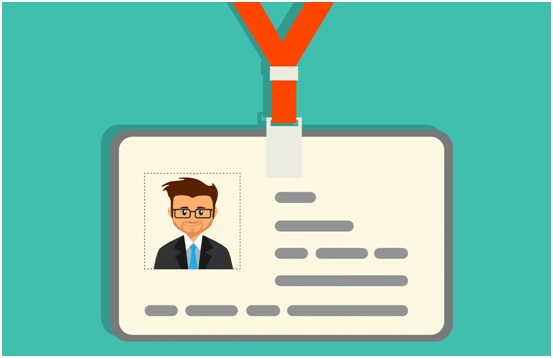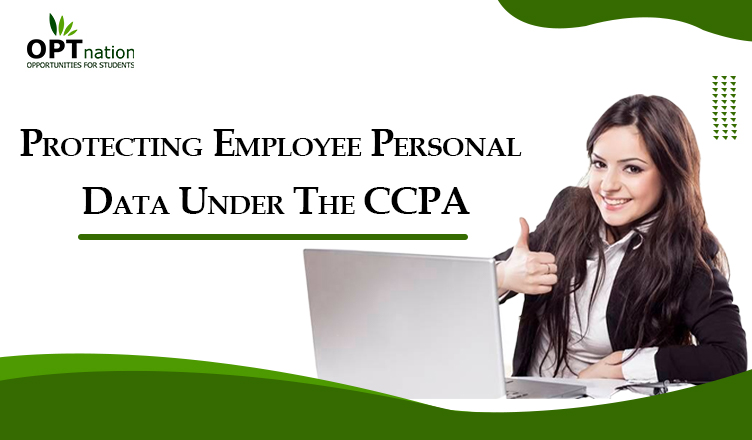Protecting Employee Personal Data Under The CCPA
Employee data rights have become a critical problem as new data privacy legislation emerges worldwide. In recent years, discussions over data privacy and employee data rights have grown to include novel implications. Furthermore, the rules governing this subject are constantly changing. As a result, employers, more than ever, are obligated to safeguard the data of their employees.
Companies have a lot of sensitive information about their employees, and regrettably, this information is sometimes kept secret. Despite disturbing statistics that data breaches grew by more than 400% in 2018, many organizations fail to prioritise employee personal data protection. The impact of a data breach on workers is significant, in addition to the effect on the organization. Once fraudsters get employees’ personal information, they will readily distribute or sell it, producing multiple employee problems.
It is now nearly impossible to successfully operate a firm without collecting your employees’ data. Businesses process employee personal data to compute salary and other payments and provide perks such as health insurance and retirement plans. It’s also needed to handle other areas of human resource management, comply with labor laws and regulations, and perhaps more. Suppose this data gets into the wrong hands. In that case, the repercussions could be disastrous, which is why many firms worldwide have made employee data privacy a prime concern.
Employers, without a doubt, have a wealth of confidential details about their employees, ranging from whether or not they have a medical issue to their income and bank account information. That’s why fostering an environment of regard for private life, data protection, security, and confidentiality in the workplace is critical. This article explains how organizations should handle employees’ data adequately while complying with applicable regulations. Continue reading.
What is the CCPA (California Consumer Privacy Act)
The California Consumer Privacy Act, or CCPA for short, The California Consumer Privacy Act (CCPA) is a state-wide data privacy law that governs how businesses all over the globe can handle California citizens’ confidential info. The CCPA became effective on January 1, 2020. It’s the country’s first law of its sort.
The CCPA places several duties on enterprises comparable to those imposed by the European Union’s General Data Protection Regulation (GDPR). Yet, a company that complies with the GDPR is subject to extra requirements under the CCPA.
The CCPA mandates you to notify your workers at the time of or before collecting their personal information. You must disclose the types of personal information you gather and the purposes for which you’re using the data. Additionally, in your privacy policy, you must explain consumer rights and how to exercise those rights.
The CCPA intends to offer consumers and employees control over their personal information by establishing the following rights:
- The right to know what personal information about the citizen is being stored.
- The right to know whether and to what party personal information is sold or given.
- The ability to refuse the sale of personal information.
- They have the right to see their personal information.
- Even if they exercise their privacy rights, they have the right to equal service and pricing.
- Children under the age of 16 must offer sign-up permission, and minors under the age of 13 must have the approval of a parent or guardian.
Ultimately, the CCPA applies if you are a profit-making organization that collects or controls any information on a California resident and meets any of the following criteria:
- Having yearly total revenue of more than $25 million
- Purchase, receive, or sell 50,000 or more customers, households, or devices’ personal information
- Trade personal information to consumers to generate 50% or more of your annual income.
- Manage the personal information of almost 4 million customers, which will need extra responsibilities.
What qualifies as an employee’s data

While most businesses do a decent job keeping customer information secret, this is only sometimes the case with employee data. If your employees want to appreciate client and customer information, you must do the same for their details.
Businesses must determine what personal data they have to comply with the relevant regulations. But are you sure you understand what information constitutes personal data and where to seek it?
There is hardly one universal legal definition of private employee data, primarily including employee addresses, images, social security numbers, birthdays, protected class information, and health information. It should also contain information about which employees or others have reasonable expectations that their employers will keep secret. It includes information that “belongs” to an employee benefit plan, and companies cannot or should not utilize it as a commodity for the financial gain of others.
Emails with identifiable employee and sick leave records are also examples of personal data.
A more extensive and well-organized list of personal data includes:
- Name
- Financial information
- Address
- Relationship or marital status
- Medical histories
- Health information
- Biometric data
- Religion
- Racial and ethnic groups
- Membership in a trade union
- Sexual preference and orientation
- Genetics
- Political affiliations
Why and how to protect your website from bots
Implementing measures to protect your website from bots and safeguard your employees’ data is essential. Internet robots, often called “bots”, are computerized software programs programmed to do relatively simple, repetitive tasks via the net. One distinguishing feature is that the bot accomplishes these duties far quicker than a person could and does it without stops or relaxation.
Bots may be both good and terrible. For starters, reputable, well-known corporations often own a decent bot (such as Twitter or Amazon), don’t conceal its identity as a bot, and adhere to the rules and norms outlined in your website’s robots.
A bad bot, on the other hand, will attempt to masquerade itself as a person, causing all sorts of issues. They generate a wide range of problems for your website, business, and employees, including:
- Starting a Layer 7 distributed denial of service (DDoS) attack.
- Scraping your website for personal information that might be used unlawfully, such as selling employee data.
- Republishing your work on other websites results in content duplication and other difficulties.
Defending your website against malicious bots necessitates a multi-pronged approach that involves both technological and operational safeguards. These are some precautions you may take to keep harmful bots away from your website:
● Activate CAPTCHAs
A CAPTCHA is a form of a quiz that is used in computers to identify whether a user is human or not. As a result, it is an effective technique for spotting bots. Developers use CAPTCHA codes to determine if a website visitor is a human or a bot.
Moreover, you can use CAPTCHAs to prevent automated bots from engaging with websites in potentially disruptive or dangerous ways, such as filling out forms, clicking on links, or accessing restricted information.
● Implement multi-factor authentication (MFA)
Another effective bot protection strategy is implementing a multi-factor authentication (MFA) system for your company and its personnel. Businesses employ MFA when they think a bot is attempting to log in to accounts, mainly when the bot uses credential stuffing to acquire account information and then use it to obtain access.
MFA not only helps decrease this significantly but also does not generate friction for legitimate users. MFA ensures that your users are who they say they are while preventing bots from accessing your system.
How to protect employee personal data under the CCPA
Considering the present situation, it is critical for employers to refocus on their legal duties related to employee data privacy and to assess whether they are adopting adequate internal safeguards to preserve such data and respond promptly to security breaches.
The most critical step that employers can do is to know their legal responsibilities. Employers can audit their policies and processes and make required changes to guarantee that private employee data is protected if those duties are recognized.
Companies today have more data about their employees than ever before. And yet, in certain jurisdictions, employers must tell employees about the data they collect and how they intend to use it.
While acquiring information on team members, always ask yourself why you need the information. Only gather data that has a clear purpose. For example, you don’t need to know what your employee performs on their own devices when they’re off the job.
Unnecessary data collection on employees may result in discrimination lawsuits.
Furthermore, endeavor to inform employees of their data protection rights and how to exercise them. You could bring in an external cybersecurity specialist to teach them appropriate practices for data privacy. It could be as basic as knowing how to avoid non-secure websites when using a workstation to browse the web.
Training on best practices for passwords, safe internal communication, and data protection regulations will surely help employees gain control of their data.
Every employer owes their employees a high degree of data protection
To comply with the CCPA once it becomes generally applicable to employment data, companies should take the required procedures to ensure employee data security.
Such measures include, but are not limited to:
- Examine the types of personal information acquired, kept, and released about workers, including if the CCPA mandates disclosures about such data, mutation of such data upon request, or other requirements.
- Examine the company’s privacy policy to verify it includes the appropriate CCPA disclosures and notices.
- Establish a DPA in all vendor partnerships that involve employee data.
- Provide a system for employees to submit requests for personal information.
- Determine who will receive requests under the CCPA and teach personnel how to react to such requests.

